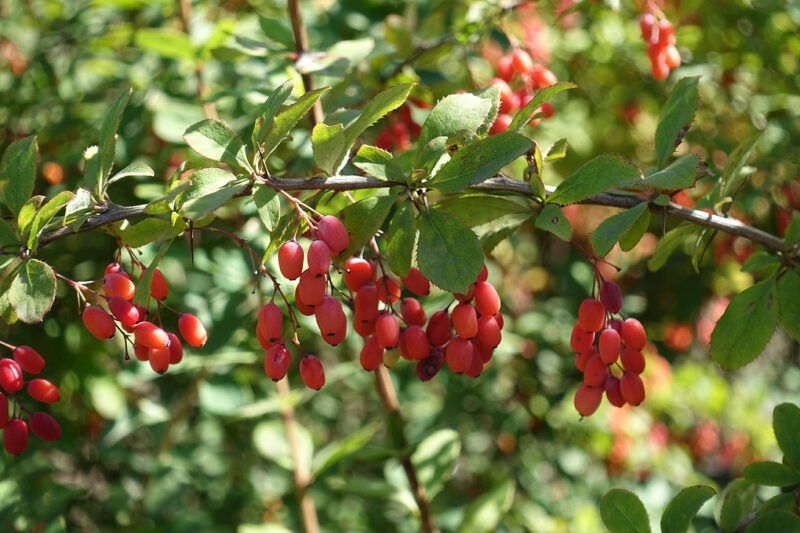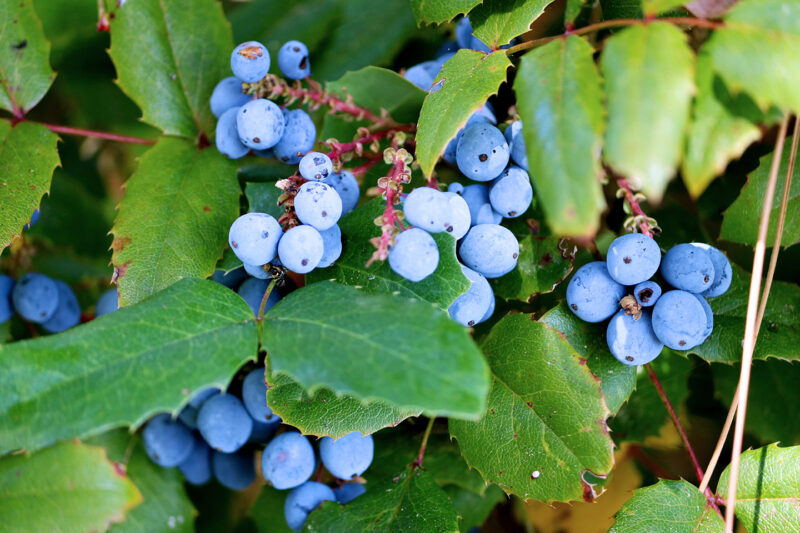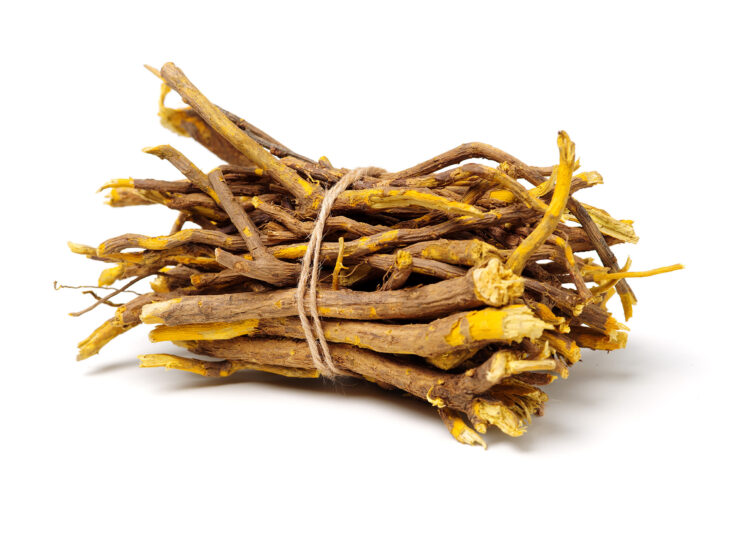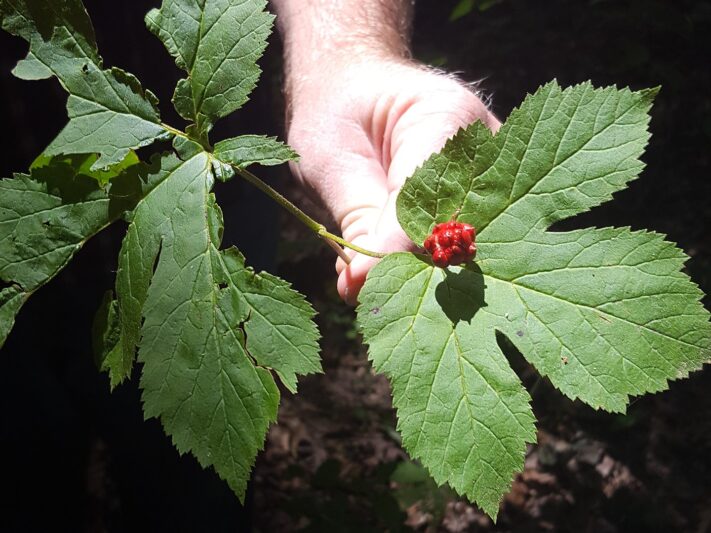Continuing our discussion about herbs that clear heat, the next category is a very commonly seen one: herbs that clear damp heat.
What is damp heat?
Damp heat is heat that is accompanied by dampness indicated by thick, greasy yellow secretions. It is often caused by congested bile but can also accompany inflammation and infections. This is seen most obviously in conditions of jaundice, hepatitis, dysentery, urinary difficulty or pain, furuncles, and eczema, although it can appear in many other conditions. It is drained by herbal cholagogues such as those discussed below.
Characteristics signs and symptoms of damp heat
- no desire to drink fluids (because of the dampness)
- if accompanied by heat, a desire to drink only in small sips
- strong or offensive odors with the discharge
- a feeling of heaviness in the body and/or limbs
- stuffiness in the chest and epigastrium
- diarrhea or dysentery (with yellowish color, mucus, or blood in the stool and a foul odor)
- burning anus
- leukorrhea (with burning, itching, yellowish discharge and odor)
- urinary tract infections
- pain-redness-swelling of the scrotum
- jaundice
- hepatitis
- boils
- septicemia
- eczema
- herpes
- ulcers
- gastrointestinal tract inflammation
- nausea or vomiting
- bitter taste in the mouth during the day
- yellowish complexion
- thick-sticky coat on the tongue
- rapid and slippery pulse
- In some, there may be a fever such as with malaria.
What kinds of herbs clear damp heat?
Herbs that clear damp heat conditions are typically cold and bitter in energy and are strongly antibacterial, antimicrobial, antipyretic and anti-inflammatory. Many are actually yellow in color, signaling they contain bitter principles such as berberine.
There are many wonderful herbs that clear damp heat. The ones discussed here have useful counterparts, making these easier herbs to find and use. Examples include:
- gentian
- scutellaria (Chinese)
- goldenseal
- barberry
- Oregon grape
- Phellodendron
- Coptis
- goldenseal
- bitter root
- centaury
- boldo
- cascara
- fumitory
- greater celandine
- sophora
Contraindications
Herbs that clear damp heat are inappropriate for those with coldness, deficient blood or yin, emaciation, and weak digestion. If they are needed, combine with herbs that warm or tonify yin, blood, or digestion as indicated.
Bitter herbs are often classified as bitter “tonics” meaning here that they do not increase energy or organ function, but rather clear damp heat and from that, improve certain physiological activities. “Bitters” are wonderful for digestion as they improve the digestion of sugar and fat plus cleanse the digestive tract, so food is better assimilated. True tonics are usually sweet in flavor and contain hormonal precursors.
BARBERRY AND OREGON GRAPE

Barberry
Barberry Root Bark, Berry Berberis vulgaris
Barberry is one of the mildest and best liver tonics. Being milder than other herbs in this category, it is safer for clearing deficient heat and usually fine to take if there’s blood and/or yin deficiency. It not only stimulates digestion but also has mild laxative properties, and is helpful for inflammatory arthritic and rheumatic complaints. It treats jaundice, hepatitis, enlargement of the liver and spleen, gallstones, arthritis, acne, boils, psoriasis, dry eczema and other skin diseases, conjunctivitis, fevers, cancer, tumors, constipation, arthritis, rheumatism, chronic amoebic and bacillary dysentery, and yellow and foul-smelling diarrhea or leukorrhea.
Many species of this plant are found throughout the world, sharing similar therapeutic purposes such as Oregon grape, discussed next.
Energy and flavors: Cool, bitter
Organs and channels affected: Liver, Stomach, Large Intestine
Chemical constituents: Berberine alkaloid, chelidonic acid, resin, tannin, wax Properties and actions: Root bark: hepatic; berry: laxative, refrigerant; clears Damp- Heat, clears Heat toxins, clears Deficient Heat
Contraindications: Coldness, Yin or Blood Deficiency, Spleen and Stomach Deficiency
Dosage and preparation: Standard decoction. Tincture (1:2 @75% ABV fresh; 1:4 @60% ABV dry), 10-30 drops TID.

Oregon grape
Oregon Grape Root Berberis repens, Mahonia repens
This Pacific Northwest variety of barberry was used by the indigenous mountain folk of California for all chronic degenerative diseases, especially cancer and arthritis. Combined with dandelion root in a tea, it is excellent for hepatitis and jaundice, enlargement of the liver and spleen, gallstones, cholecystitis, poor protein absorption, GI infections, diarrhea, and arthritis. It also treats chronic skin problems caused by blood toxicity such as acne, boils, psoriasis, dry eczema, and others. As well, it treats conjunctivitis, fevers, cancer, tumors, constipation, arthritis, rheumatism, chronic dysentery, yellow and foul-smelling diarrhea or leukorrhea, and opium and morphine addiction.
I have seen a yellow tongue coat not change when given stronger damp heat-clearing herbs, but respond to the milder Oregon grape root instead.
Energy and flavors: Cool, bitter
Organs and channels affected: Liver, Stomach, Large Intestine
Chemical constituents: The alkaloid berberine
Properties and actions: Alterative, hepatic, laxative; clears Damp-Heat, clears Heat toxins
Contraindications: Coldness, Yin or Blood Deficiency with Heat signs, Spleen and Stomach Deficiency
Dosage and preparation: Standard decoction. Tincture (1:2 @60% ABV fresh; 1:5 @70% ABV dry), 10-30 drops TID.
COPTIS AND GOLDENSEAL

Coptis
Coptis Root, Rhizome Coptis chinensis, Huang lian (Chinese)
The Chinese herb coptis is a very strong herb that is specific for treating inflammations and infections in the lower, middle and upper parts of the body. It not only clears damp-heat but also drains fire (see my first blog in this series), and resolves toxins (see my second blog in this series) to treat symptoms of diarrhea, acute enteritis, dysentery, hepatitis, cirrhosis and jaundice. It is also used for leukemia, conjunctivitis and otitis media. As well, it is used for hot skin conditions such as boils, carbuncles and abscesses.
It can actually be used for all inflammations and infections, especially of the mouth and tongue. It treats vomiting and/or acid regurgitation due to heat in the stomach, gastric pain (clears H. pylori bacteria), and bad breath. As well, it stops bleeding, such as nosebleed, or blood in the urine, stool or vomit.
Coptis acts as a sedative because it clears heat in the heart, treating Shen disorders with such symptoms as insomnia, nervousness, delirium, irritability, restlessness, high fever, meningitis, painful red eyes, sore throat, and a bitter taste in the mouth in the morning.
Topically it is used for red, painful eyes, ulcerations of the tongue and mouth, canker sores, and scabies.
Coptis is very similar to goldenseal, making it a useful substitute since goldenseal has been overharvested.
Energy and flavors: Very cold, very bitter
Organs and channels affected: Heart, Liver, Stomach, Large Intestine
Chemical constituents: Berberine, coptisine, columbamine, obakunone, obakulactone, jatrorrhizine, palmatine, worenine, magnoflorine, ferulic acid
Properties and actions: Antibacterial, cholagogue, antipyretic, sedative, anti- inflammatory; clears Damp-Heat, drains Fire, clears blazing Heart and Liver Fire Contraindications: Diarrhea, loose stools, Coldness, Yang Deficiency, Heat from anemia, Blood, Yin, or Essence Deficiency. Only give to strong patients with Excess conditions as it can easily injure the Yin. Do not take long-term.
Dosage and preparation: Decoction, 1-9g. Tincture (1:2 @50% ABV), 10-60 drops TID. Stir-bake to reduce its Cold nature. Add wine for an ascending action, and to clear Fire and Heat from the head and eyes. Add ginger to clear Stomach Heat with

Goldenseal. By Mustangracer05 – Own work, CC BY-SA 4.0
Goldenseal Root Hydrastis canadensis
Goldenseal dries and cleanses mucous membranes, inhibits excessive mucus flow, and counteracts inflammation in the lower, middle and upper parts of the body, treating hemorrhoids, leukorrhea, bladder infections, vaginitis, vaginal yeast, dysentery, constipation, colitis, ulcers, indigestion, heartburn, severe sore throat, fever, chronic middle ear infections, and conjunctivitis. It also aids digestion, treats liver diseases, cleanses toxins from the blood, and counters infection, treating tumors, hepatitis, jaundice, cirrhosis, and cancer.
It is also used for chronic alcoholism, biliousness, bladder disease, eczema, erysipelas, nasal catarrh, malaria, dysmenorrhea, menorrhagia, gonorrhea, cystitis, uterine ulceration and erosion, pyorrhea, and glandular inflammation. It stimulates the uterine muscles, contracts blood vessels and inhibits excessive bleeding.
Topically, it is used in eyewashes for inflamed eyes or for vaginitis, or in salves, powders and tinctures for eczema, inflammation of the ear, and skin infections.
Because goldenseal has been overharvested, only purchased cultivated.
Energy and flavors: Cold, bitter
Organs and channels affected: Heart, Liver, Stomach, Large Intestine
Chemical constituents: Hydrastine, berberine, resin, traces of essential oil, chologenic acid, fatty oil, albumin, sugar
Properties and actions: Alterative, anti-inflammatory, astringent, laxative, antibacterial, antifungal, antiprotozoal, cholagogue; clears Damp-Heat, clears Heat toxins, kills parasites
Contraindications: Pregnancy, coldness, Yang, Yin, Blood, Spleen, or Stomach Deficiency. Long-term or excessive use can weaken the flora of the colon.
Dosage and preparation: Infusion, 1 tsp. to 1 cup of boiling water. Tincture (1:2 @75% ABV fresh; 1:5 @60% ABV dry), 10-30 drops TID.
